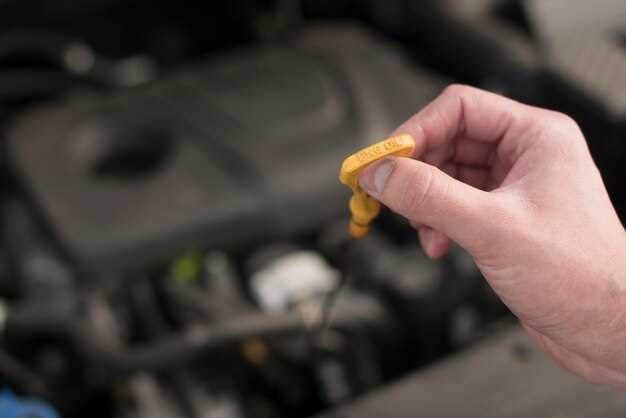
A blown head gasket is a serious issue that can lead to significant engine damage if not addressed promptly. Recognizing the symptoms of a blown head gasket early on can save you time, money, and extensive repairs. In this article, we will explore the key indicators that can help you identify potential gasket failure before it devolves into a more severe engine problem.
One of the most common signs of a blown head gasket is overheating. When the gasket fails, it can no longer seal the coolant passages effectively, resulting in coolant leaks and inadequate cooling of the engine. If you notice your engine temperature gauge creeping into the red zone, it’s crucial to investigate further.
Another significant symptom to watch for is white smoke emanating from the exhaust. This happens when coolant seeps into the combustion chamber and gets burned along with fuel, producing a distinctive white vapor. Additionally, you may observe bubbles in the radiator or coolant reservoir, indicating that exhaust gases are escaping into the cooling system–a clear sign of a blown head gasket.
In summary, being vigilant about the signs of a blown head gasket can prevent further damage and costly repairs. By understanding these symptoms, you can take the necessary steps to address the issue promptly and maintain your vehicle’s performance.
Identifying Symptoms of Engine Overheating

Engine overheating can lead to severe damage, including a blown head gasket. It is crucial to recognize the symptoms early to prevent costly repairs and ensure vehicle safety. One of the most noticeable signs of overheating is the temperature gauge on the dashboard. If it consistently reads in the red zone, immediate action is required.
Another symptom is steam or smoke emanating from the engine bay. This can occur if the coolant is boiling over due to excessive heat. Unusual odors, particularly a sweet smell, might indicate coolant leakage. Furthermore, engine performance issues, such as a loss of power or stalling, can also be linked to overheating.
Inspecting the coolant levels is essential. If they are low, it can be a sign of leakage or evaporation caused by high temperatures. Additionally, the presence of bubbling in the radiator or the expansion tank is a concerning indicator, suggesting that exhaust gases are entering the coolant system.
Inconsistencies in engine noise, including knocking or pinging, can also signal overheating. These sounds may be a result of excessive thermal stress on engine components. Lastly, if the check engine light illuminates, it could be linked to overheating or related issues, warranting immediate diagnostics.
Recognizing Oil and Coolant Mixture Issues

Identifying a mixture of oil and coolant is crucial for diagnosing a blown head gasket. When these two fluids combine, it can indicate internal engine problems that require immediate attention. The formation of this mixture often results in a series of noticeable symptoms.
One of the primary signs is the appearance of milky or frothy oil. This can be observed when inspecting the oil dipstick or the oil fill cap. The presence of a creamy, off-white substance indicates coolant contamination, which compromises the oil’s ability to lubricate engine components effectively.
Additionally, check the coolant reservoir for any signs of oily residue. If the coolant appears discolored or has a layer of oil floating on top, it is a strong indication that oil has mixed with the coolant. This can lead to significant engine overheating and damage over time.
Another symptom to watch for is exhaust smoke. If you notice white smoke emitting from the exhaust, it may suggest that coolant is leaking into the combustion chamber. This is often accompanied by a sweet smell, characteristic of burning coolant, which further emphasizes the need for a thorough inspection.
Furthermore, monitor the engine temperature gauge. A fluctuating temperature reading can signal that the cooling system isn’t functioning properly due to the mixing of oil and coolant. This often results in overheating, putting additional strain on the engine and increasing the risk of catastrophic failure.
Ultimately, addressing these issues promptly is essential. If you suspect oil and coolant mixing, it is advisable to consult a professional mechanic for an accurate diagnosis and necessary repairs. Ignoring these signs can lead to severe engine complications and costly repairs.
Observing Changes in Engine Performance and Exhaust
Monitoring the performance of your vehicle’s engine is crucial in identifying potential issues, including a blown head gasket. One of the most significant changes you may notice is a decrease in power output. When the head gasket fails, compression can be lost between cylinders, resulting in a noticeable drop in acceleration and overall performance.
Another indicator is fluctuations in engine temperature. A blown head gasket can lead to coolant leaks, causing the engine to overheat. Be attentive to the temperature gauge on your dashboard; if it consistently reads higher than normal, this could signal a serious problem.
Moreover, keep an eye on the exhaust emissions. A head gasket failure can cause white smoke to emerge from the exhaust pipe, indicating coolant burning in the combustion chamber. If you see this, it’s vital to investigate further, as it often points to a failure in the head gasket sealing process.
Additionally, an oily residue on the engine oil cap can suggest coolant mixing with the engine oil, a condition that might arise from a compromised head gasket. If you notice a milky substance, this is a clear sign of potential internal leaks.
Changes in engine noise may also be apparent. A blown head gasket often leads to an unusual knocking or pinging sound, as the engine may struggle to maintain proper compression. If you hear such noises, it is essential to conduct further diagnostics.
Finally, observe any increase in fuel consumption. An engine that is not operating efficiently due to a blown head gasket may consume more fuel than usual, as it has to work harder to maintain performance standards.


